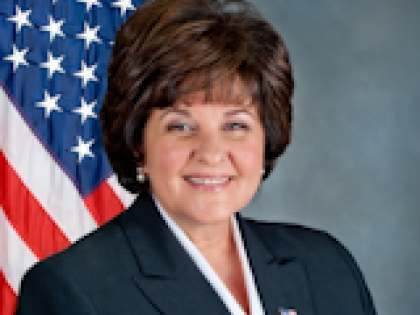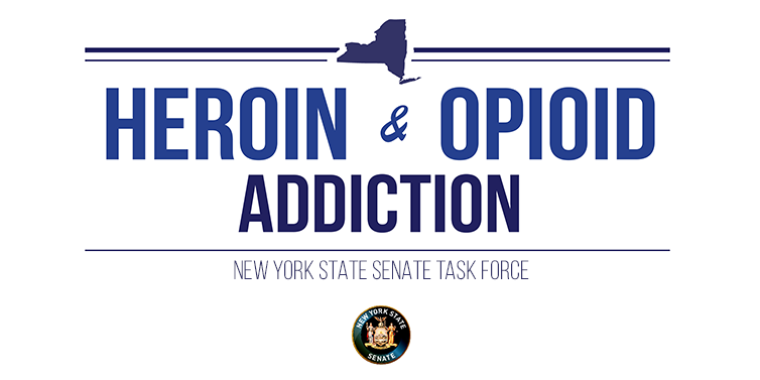
Senator Marchione Introduces the "Second Amendment Protection Act"
Kathleen A. Marchione
March 4, 2013
-
ISSUE:
- Crime
- Recreation and Tourism
- Racing
For Immediate Release: February 28, 2013
Contact: Joshua Fitzpatrick, (518) 455-2381, fitzpatr@nysenate.gov
SENATOR KATHLEEN MARCHIONE INTRODUCES
THE “SECOND AMENDMENT PROTECTION ACT” TO SAFEGUARD THE CONSTITUTIONAL FREEDOMS OF ALL NEW YORKERS
Marchione’s legislation would repeal the unconstitutional provisions of new gun control law, ensure the preservation of Constitutional liberties for all law-abiding gun owners across New York State
New York State Senator Kathleen A. Marchione (R,C-Halfmoon) today introduced legislation – the “Second Amendment Protection Act,” Senate Bill S.3948 – that would repeal the unconstitutional and restrictive new gun control law recently enacted in New York State. Marchione announced the new legislation during her remarks made during today’s pro-Second Amendment rally held in Albany.
The unconstitutional new gun control law – the “Secure Ammunition and Firearms Enforcement Act” (also referred to as the “NY SAFE Act” or “SAFE ACT”) – was passed with a Message of Necessity, without a single public hearing or opportunity for citizens to comment – or for legislators to carefully review the bill. The measure was enacted on January 15, 2013, and has caused a firestorm of controversy since its enactment. Numerous local governments, members of law enforcement and citizens have expressed concerns over what are seen as the new law’s unconstitutional provisions, its criminalization and stigmatization of law-abiding gun owners and imposition of costly, burdensome new unfunded mandates on localities.
Senator Marchione’s Second Amendment Protection Act seeks to amend or repeal those sections of the NY SAFE Act that are of questionable legality or which present practical problems for mental health officials or law enforcement. The legislation also amends sections of the NY SAFE Act that impose unfunded mandates on already overburdened local governments. Marchione started an on-line petition to repeal the unconstitutional provisions of the new law – and more than 126,000 New Yorkers have signed since it was launched January 15.
“I stood up, spoke out and voted against the unconstitutional gun control law because it was a bad policy created by a bad process. I took time drafting the Second Amendment Protection Act to ensure we had the correct, responsible legislative remedy to repeal the unconstitutional provisions of the new gun control law. I honestly don’t know if my bill will be successful, but I took an oath to preserve and defend the Constitution – that includes the Second Amendment freedoms of all New Yorkers. I kept my promise and, with the support of law-abiding New Yorkers, will keep standing strong in defense of the Constitution,” Marchione said.
Highlights of Senator Marchione’s Second Amendment Protection Act include:
· Repeals section 37 of the SAFE Act which redefined an “assault weapon” by stating that a semiautomatic rifle or pistol that has an ability to accept a detachable magazine (regardless of size) or a semiautomatic shotgun, either of which has only one of the characteristics listed in the statute, such as a folding or telescoping stock, would now be defined as an “assault weapon.”
(Continued) These artificial distinctions would re-classify a large number of the weapons currently owned by law-abiding citizens for sporting and personal protection, arguably infringing upon the rights guaranteed them by the Second Amendment to the U.S. Constitution and Article 2, section 4 of the New York Civil Rights Law;
· Repeals section 38 of the SAFE Act that redefines “large capacity ammunition feeding device” to include those that can accept more than seven rounds of ammunition. This section contains measures that would be extremely burdensome to enforce and would create new “New York only” standards on manufacturers of ammunition feeding devices. The SAFE act also does not contain appropriate exemptions for police, military and other government agencies;
· Repeals the amendment to paragraph 3 of subdivision a of section 265.20 of the Penal Law contained in section 46 of the SAFE Act as it refers to the registration of firearms, that by the repeal of other sections would no longer be required. This section also repeals new paragraph 7-f as that exemption would no longer be needed with the repeal of sections dealing with the possession of ammunition feeding devices capable of holding more than seven rounds;
· Repeals section 51 of the SAFE Act that would criminalize the failure of a gun owner to report the loss or theft of a gun to a police department within twenty-four hours of discovery by making it a class A misdemeanor, punishable by up to a year in jail. Previously, such a failure was only punishable by a fine not to exceed one hundred dollars. This amendment criminalizes this failure or omission to act, without requiring knowledge or intent on the part of the person failing to act and without regard to his or her ability to act. Conceivably, a victim of a robbery, hospitalized as a result of injuries sustained in the robbery for more than 24 hours, could be guilty of failing to make a timely report;
· Amends a paragraph of section 265.20 of the Penal Law to add the provisions of section 265.01-a, added by section 41 of the SAFE Act, to the list of sections that do not apply to law enforcement. Without this amendment, a law enforcement officer could be prosecuted for having a weapon on school grounds;
· Repeals section 41-a of the SAFE Act which would criminalize the possession of a firearm, which would include the newly defined “assault weapon” and make the failure to register a firearm, including the newly defined assault weapon, a felony crime. The latter provision of the SAFE Act could result in thousands of otherwise law abiding New Yorkers being subject to felony prosecution if they fail, refuse or neglect to register weapons that are now legal. This section is of questionable constitutional validity and appears in conflict with the New York Civil Rights Law;
· Repeals section 49 of the SAFE Act that would create a new statewide license and record database. This database would cost approximately $32.7 million, according to the Executive’s proposed 2013-14 budget. While the creation of the database is well-intended, the chilling effect on the rights of legal gun owners imposed by the additional records maintained in this database, outweighs its benefit;
· Repeals section 47 of the SAFE Act that added a new requirement for the storage of rifles, shotguns and firearms. While this section of the SAFE Act is well intentioned, it was not fully thought out and contains practical problems that could unintentionally subject otherwise law-abiding citizens to criminal prosecution. The provisions of the SAFE Act would seem to require that persons living with someone prohibited from possessing a firearm would have to use a gun locking device or lock his or her weapons in a “safe storage depository” nearly all of the time, which would seemingly prevent such weapons from being immediately available for self-defense, the defense of others or the protection of home invasion;
· Repeals section 46-a of the SAFE Act which would make possession of a newly defined large capacity ammunition feeding device a crime;
· Repeals section 17 of the SAFE Act that added a new Article 39-DDD to the General Business Law. While there is some merit to requiring a background check for sales or exchanges of certain weapons, the SAFE act presumes that licensed dealers will be willing to perform the background check, complete the necessary paperwork and maintain records of such transaction and assume the liability therefore for a fee not to exceed ten ($10.00) dollars per transaction. If the dealer were to charge more than ten ($10) dollars, the dealer would violate the law and commit a misdemeanor, punishable by up to one year in jail. It is more probable that no dealers would consent to undertake these tasks for the limited fee authorized and the individual seller would be left without the ability to transfer the weapon or risk punishment for a class A misdemeanor by transferring the weapon without a dealer’s involvement;
· Repeals section 20 of the SAFE Act. While undoubtedly well intended, the new section 9.46 added to the Mental Hygiene Law has been opposed by some organizations of mental health professionals because it may deter individuals from seeking professional help or from fully disclosing their intentions to their mental health professional. There is further opposition to this provision on the basis that it reinforces stereotypes of persons with mental illness as dangerous. To add to the problems with this provision, it would appear to be an unfunded mandate. If just all hospital admissions to psychiatric units required a MHL 9.46 report, there would be over 200,000 reports annually in the state to be received, evaluated and passed on to DCJS. County mental health offices are not equipped to handle this flood of new work and would have to hire at least hundreds of new staff without a revenue stream. Lastly, while MHL 9.46 protects the mental health professional from civil or criminal liability, no such protection is afforded the directors of community services or their counties;
· Repeals section 50 of the SAFE Act that would impose a new requirement on sellers of ammunition to record, in detail, every ammunition sale and clear every transaction through the proposed, to-be-established statewide license and record database. This is a new mandate on ammunition sellers and purchasers, regardless of the type of ammunition or quantity, which will result in tens of thousands of new records required to be kept. The likely impact will be additional costs to New York business owners, a chilling effect on the rights of New York gun owners exercise of their legal rights and the shift of ammunition purchases out of state;
· Repeals the amendments to subdivision (8) of section 265.02 of the Penal Law, added by section 41-b of the SAFE Act, as that section would criminalize the possession of the newly defined “large capacity ammunition feeding device”;
· Repeals amendments of section 48 of the SAFE Act that create a new firearm licensing system. The Executive’s proposed 2013-14 Budget estimates the cost of this new system at $35.9 million at a time when the state is struggling to meet the challenges of our current economic climate and faces significant cuts in federal assistance. Additionally, this system would seem duplicative of the record keeping of County Clerks and separate from any national gun registration database. The SAFE Act additionally establishes a complex system for certain gun owners to request that their license information to be withheld from disclosure;
· Repeals those new sections of law added by the SAFE Act that would require, for the first time, registration of newly defined assault weapons. This registration requirement will affect tens of thousands of sportsmen and hunters in New York and potentially subject them to criminal prosecution for their failure to register their firearms. This requirement could create a chilling effect on the exercise of citizens’ rights under the Second Amendment to the U.S. Constitution, the NYS Constitution and the New York Civil Rights Law;
· Repeals section 53 of the SAFE Act that would require that the fiduciary or attorney of record include a particularized description of every firearm, shotgun and rifle in the list of assets of the decedent’s estate in the surrogate’s court and with the division of criminal justice services. This section appears to require all firearms, shotguns, and rifles, whether antique, non-working or otherwise to be listed. While there appears to be no sanction for a failure to list, it is practically difficult for an attorney of record, who generally does not control the decedent’s household effects and personal property to report any specific property; he must usually trust the next-of-kin to provide the list; and
· Amends section 446-a of the Family Court Act to clarify that the Family Court Judge can determine to suspend or revoke the license to carry, possess, repair or dispose of a firearm or the eligibility for such a license when issuing an order of protection; this is particularly important in the case of a temporary order where suspension, rather than revocation may be most appropriate until all facts are known or adjudicated.
-30-
Share this Article or Press Release
Newsroom
Go to Newsroom

Special Event Honoring the 4 Chaplains of World War II
January 26, 2018

